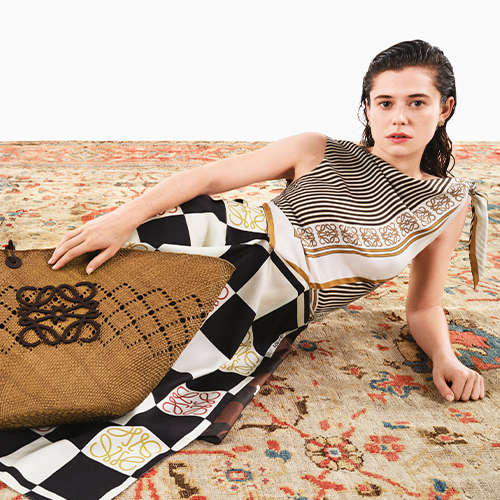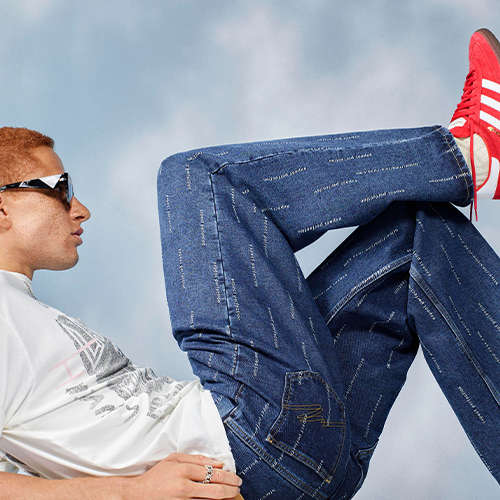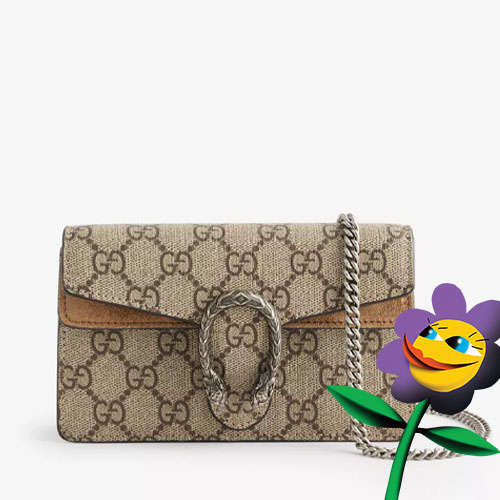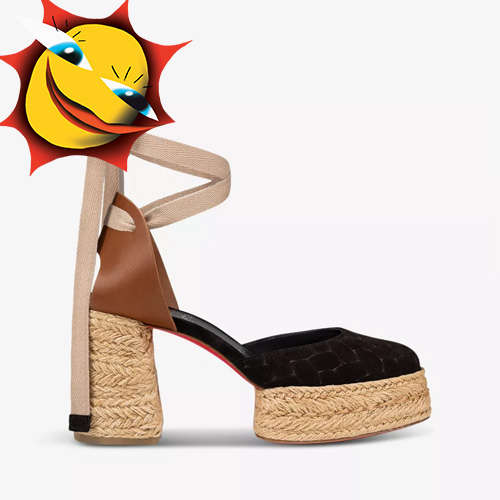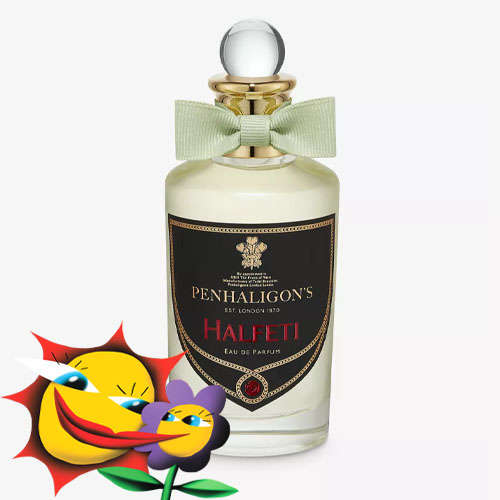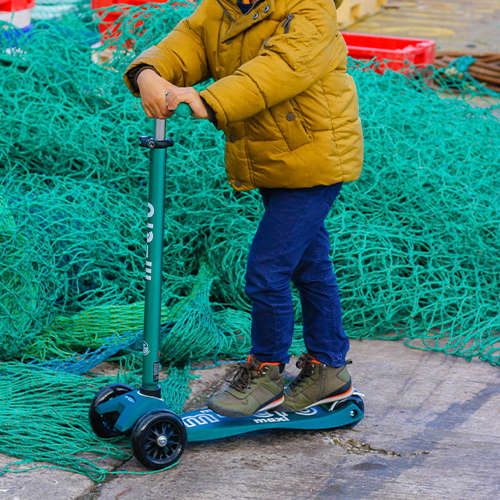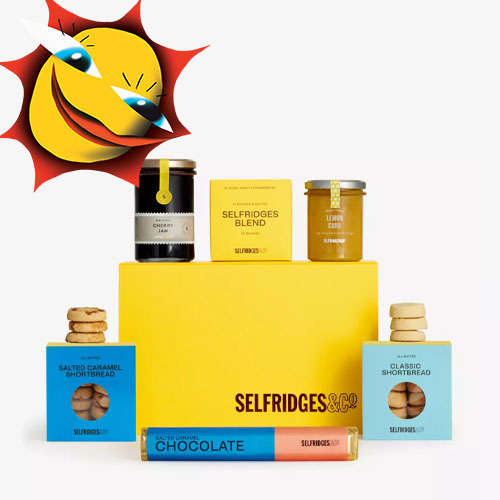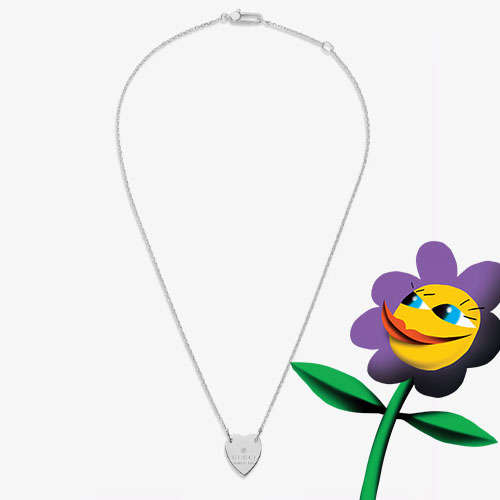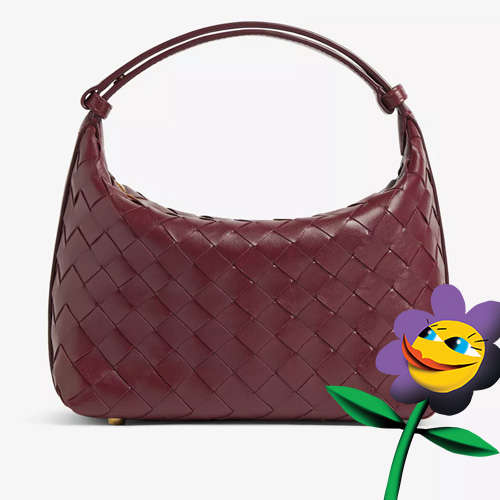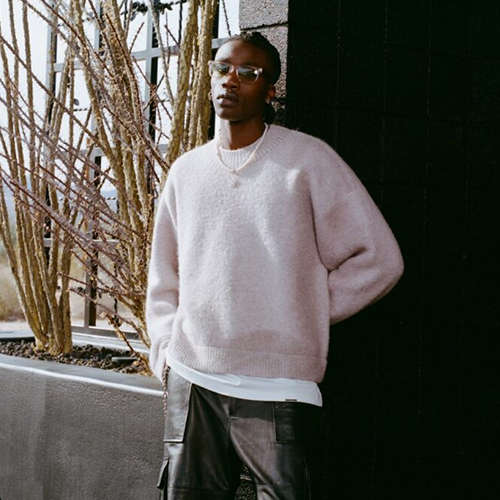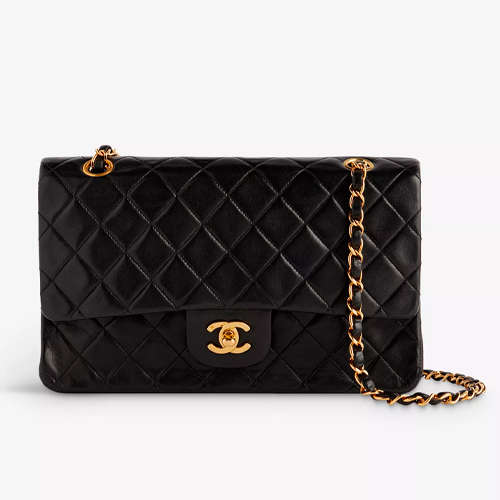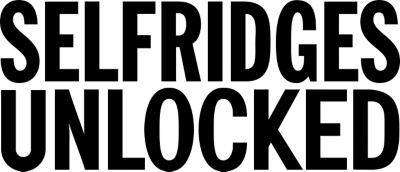- Australia / AUD $
- Canada / CAD $
- China / CNY ¥
- France / EUR €
- Germany / EUR €
- Hong Kong SAR China / HKD $
- Ireland / EUR €
- Italy / EUR €
- Japan / YEN ¥
- Kuwait / USD $
- Macao SAR China / HKD $
- Netherlands / EUR €
- Qatar / USD $
- Saudi Arabia / USD $
- Singapore / SGD $
- South Korea / KRW ₩
- Spain / EUR €
- Taiwan / TWD $
- United Arab Emirates / USD $
- United Kingdom / GBP £
- United States / USD $
- Not yours? Read more
Tell us what you think
Shop in your local currency and language
You are currently in United States US / USD $ store
- English
- English
- English
- English
- English
- English
- English
- English
- English
- English
- English
- English
- English
- English
- English
- English
- English
- English
- English
- English
- English
Did you know that we deliver to 130 countries or regions and offer a range of delivery options to suit you wherever you are in the world? Find out more
Sign up once to our Selfridges+ service and you can enjoy unlimited deliveries wherever you are in the world. FIND OUT MORE
International delivery
With almost everything on selfridges.com available for International Delivery, you can send your order to 130 countries or regions around the world, including North America, Australia, the Middle East and China.
Although we only offer 20 currencies to browse in online, you can still deliver to all of the following countries or regions:
- Algeria
- Andorra
- Antigua and Barbuda
- Aruba
- Australia
- Austria
- Azerbaijan
- Bahrain
- Bangladesh
- Barbados
- Belarus
- Belgium
- Belize
- Bermuda
- Bolivia
- Botswana
- Brunei
- Bulgaria
- Cambodia
- Canada
- Cayman Islands
- Chile
- China
- Colombia
- Costa Rica
- Croatia
- Cyprus
- Czech Republic
- Denmark
- Dominica
- Dominican Republic
- Ecuador
- Egypt
- El Salvador
- Estonia
- Finland
- France
- French Guiana
- Germany
- Gibraltar
- Greece
- Grenada
- Guadeloupe
- Guatemala
- Guernsey
- Guyana
- Honduras
- Hong Kong
- Hungary
- Iceland
- India
- Indonesia
- Ireland
- Israel
- Italy
- Jamaica
- Japan
- Jersey
- Jordan
- Kazakhstan
- Kenya
- Kuwait
- Laos
- Latvia
- Lebanon
- Lesotho
- Liechtenstein
- Lithuania
- Luxembourg
- Macau
- Malaysia
- Maldives
- Malta
- Martinique
- Mayotte
- Mexico
- Monaco
- Montserrat
- Morocco
- Myanmar
- Namibia
- Netherlands
- New Zealand
- Nicaragua
- Nigeria
- Norway
- Oman
- Pakistan
- Panama
- Paraguay
- Peru
- Philippines
- Poland
- Portugal
- Puerto Rico
- Qatar
- Reunion
- Romania
- Rwanda
- Saint Kitts and Nevis
- Saint Lucia
- Saint Martin (French part)
- San Marino
- Saudi Arabia
- Serbia
- Singapore
- Slovakia
- Slovenia
- South Africa
- South Korea
- Spain
- Sri Lanka
- Suriname
- Swaziland
- Sweden
- Switzerland
- Taiwan
- Tanzania
- Thailand
- Trinidad and Tobago
- Turkey
- Uganda
- Ukraine
- United Arab Emirates
- United Kingdom
- United States
- Uruguay
- Venezuela
- Vietnam
HOW TO MAKE YOUR OWN MASTER’S
With our Picton Studios artistic resident, Stacie Woolsey
We talk to Stacie about her alternative education experiment, taking matters into her own hands, and living in our artistic residence.
Words: Chekii Harling
With all costs considered, a master’s degree in the UK will currently set you back around £40,000, with minimal loans available and scholarships few and far between. Stacie Woolsey was shocked at the inaccessibility of an art and design postgraduate degree, so the graphic design graduate took matters into her own hands and created an alternative master’s course – Make Your Own Masters (MYOM).
Sourcing creative briefs, workspace and tutoring from creatives in the industry, Stacie completed her master’s in ‘Anthropological Futures’ and put on her ‘degree show’ at Somerset House, which caught the attention of Selfridges. We invited the designer to join our in-house artistic residence, Picton Studios (which gives young creatives an opportunity to live and work in a central location with affordable rent and like-minded neighbours), as she developed her project.
We caught up with Stacie to discuss her time spent at Picton Studios, how artistic solutions can help to level the playing field, and how we all have the power to design our own destinies.
Chekii: How do you think growing up in Doncaster influenced the Make Your Own Master's project?
Stacie: I do struggle with it sounding like a sob story, but nobody from my school went on to study a creative subject – if you were going to study art, you’d become an art teacher. Only about 10% of my school went to university; it wasn’t necessarily an obvious path. I did an art foundation at Leeds College of Art and then went on to do my degree in Graphic Design at Kingston University.
Chekii: How do you think your degree shaped the work you create today?
Stacie: It was a Graphic Design course, but it didn’t necessarily produce graphic designers. It was much more about developing experimental thought processes. I ended up leaving with a portfolio of small social experiments and lots of mini inventions.
Chekii: What were your first jobs?
Stacie: My first [job] was with a company called Candy Mechanics, which made 3-D lollipops out of people’s faces. I then went into advertising, but it really didn’t click. If you don’t slot into a commercial world, the obvious route is to do an MA, but it soon became obvious that I couldn’t afford one. My family are my biggest cheerleaders, but the financial aspect just wasn’t an option.
Chekii: When did the idea of MYOM develop?
Stacie: I was doing an internship at the time, and I remember thinking, ‘why don’t you just make your own master’s?’. I am a designer: designers solve problems, and I had hit a real problem for myself that needed a solution. I emailed design specialists I admired [Thomas Thwaites, Alexandra Daisy Ginsberg, Seetal Solanki…], asking them to set me a brief and within a week most of them got back to me.
If you don’t slot into a commercial world, the obvious route is to do an MA, but it soon became obvious that I couldn’t afford one.

Stacie’s master's project titled Future Nurseries, soaps made from dirt. This is comment on how children are raised in sterile environments because of a commercial push to buy cleaning products. The making of these dirty soaps symbolised integrating good bacteria back into the home.
Chekii: What was it that you loved about the work of these particular designers?
Stacie: It was experimental. They are all speculative future thinkers who are all working for a better tomorrow. Their work wasn’t trying to sell you anything.
Chekii: What were some of the briefs that they set you?
Stacie: The first brief was from [British designer] Thomas Thwaites. It was about design in the Second Gilded Age. In 19th-century America, one per cent [of people] had all the wealth, and the people underneath them were getting poorer and poorer [a period known as the Gilded Age]. There’s a theory that, because of technology, we are entering the Second Gilded Age. I decided that I wanted to do a project in which the masses had more control – it was called Coal.
Chekii: How did you bring this project to life?
Stacie: There is this super material called graphene. It’s stronger than steel and is super lightweight, and recent studies have shown that coal can be found inside it. I was looking at the resurgence of the mining industry in Doncaster, using three short stories that highlighted how the locals were using this new material to make money for themselves. The girls in the salons were using graphene to make super-long nails, while the young lads constructed ad-hoc buildings that solved a housing crisis, and people were dyeing the fur of dogs to give them a protective armour. The stories were inspired by the political unrest that had happened previously with the initial miners’ strike, but this time the stories were positive.
Chekii: Did the miners’ strike affect anyone in your family?
Stacie: My granddad was a miner, and he has so many stories. I approached a time of historical unrest with an optimistic outlook. Speculative design is a growing tangent of design, but it usually explores subjects like man on Mars. I wanted to look at possibilities for the future of a local community.
Stacie’s MYOM ‘New Coal’ project set by Thomas Thwaits. The study as a whole explored the discovery of the super material, graphene which exists inside coal and was underpinned by the impact that the mining crisis had on working class towns (1984-5). Drone footage filmed from the old pits of ex-mining town Doncaster, where Stacie grew up. Commissioned by the BBC X ICA.
Chekii: What was the outcome?
Stacie: There was a series of scripts, which ended up being commissioned by BBC Sounds and narrated by my family with their really broad Doncaster accents. They asked me to write down all the voice actors – it was, like, ‘my grandad, my auntie who lives over the road...’. Then, there were these artefacts that went alongside it, and drone footage, which became part of the installation.
Chekii: How did creating your own master’s degree morph into you launching the programme for other people?
Stacie: I had a solo show at Somerset House that I invited the press to, and people identified with the problem really quickly. I was receiving so many emails and Instagram messages – people had assumed that the programme was already up and running. So, I decided to roll it out to 10 people. I opened the applications, and on the final day there were 100 applicants.
Chekii: What did the MYOM students have to submit?
Stacie: I asked them to submit three pieces of work, so I could get an idea of what they were into. Then there was a written form that talked about their previous experience of education. It was important for me to understand what their barriers were to a real MA – there was age, culture, finance, and people who had struggled to find the right course. That is what Make Your Own Master’s is really good at: I wanted people who had a foot in more than one discipline. It was also important that they understood that the course is an experiment.
MYOM is about having a skill and honing it rather than developing a formal level of education.

Make Your Own Masters , Class of 2020.
If I’m up against somebody with a real MA, who are they going to favour? Somebody who could afford a degree, or somebody who wanted it enough to make their own?
Chekii: How have you structured the course?
Stacie: We spent the first two months doing a series of workshops and getting them to think about what a design brief is. Then they all source their own briefs on their own terms, and I just provide the basic structure and guidance throughout the learning process.
Chekii: How are the students’ projects going?
Stacie: We had a prototype session last week, and they are all really coming together. It’s really diverse in terms of subject matter: there’s surveillance in the black community, digital bodies online, ethics, and there’s another that is quite apocalyptic – really ironic timing!
Chekii: Do you have plans to put on a show at the end of the course?
Stacie: We are definitely going to do a final show, and we’re aiming to do a work-in-progress one as well. It’s important to celebrate what’s been produced while inviting notable people into this experiment.

Daniel Oduntan, MYOM Class of 2020. Project explores surveillance in the black community, underpinned by growing concerns of the safety and legality of facial recognition technology.
“Have we shared too much of ourselves in this fast and ever expanding online universe?”
I was just wandering around Mayfair with a Chihuahua, thinking, ‘who am I?’
Chekii: How did your relationship with Selfridges develop?
Stacie: That was a bit of a whirlwind. I was a little bit homeless at the time, and I had a meeting at Selfridges to talk about what I had been doing when they had just got Picton Studios up and running. I think that they understood MYOM and where I was with it.
Chekii: Did you enjoy living at Picton Studios?
Stacie: How could it not be great, living in a flat next to Selfridges for four months? At one point, I was looking after this lady’s Chihuahua who lived in Brixton. I was just wandering around Mayfair with a Chihuahua, thinking, ‘who am I?’.
Chekii: How did you use the space during your time there?
Stacie: That’s where I ended up holding all the interviews and every one-to-one session. It became a really nice hub in which everything kind of got off [the] ground. Picton Studios was Make Your Own Masters’ little home.

Benjamin Bowe-Carter, MYOM Class of 2020. Project titled ‘Mirrors of Convention’ exploring beauty stereotypes, surgery, re-touching and true reflections in a world of social media.
Chekii: Your degree is titled ‘Anthropological Futures’ – how would you define this?
Stacie: I didn’t know what the word anthropological meant at the beginning of this, so the fact that I now use it most days is a trick. I realised that everything I was doing was about understanding how people behaved in different scenarios. I’m highlighting an alternative reality that could be used to make changes in the present day.
Chekii: It would be an amazing tool for people in government to look at these projects when thinking about social solutions.
Stacie: There is such a value in not talking generally and really stripping it back in order to understand what ties a community together – it doesn’t [necessarily] have to be location.
Chekii: If you woke up tomorrow and you were the Secretary of State for Education, what would you change?
Stacie: Whether education is serving its purpose is another question, but the problem that needs to be tackled first and foremost is the question of access. Everything is underpinned by financial restrictions. I don’t think not being able to physically afford an education is a good enough excuse in 2020. Something could and should be done.
There is such a value in not talking generally and really stripping it back in order to understand what ties a community together.

Guoda Šulskytė, MYOM Class of 2020. ‘Survival’s not fair’ explores an apocalyptic society formed following the environmental collapse of the world as we know it.
Chekii: What do you think needs to be done?
Stacie: Even if institutions continue to do what they always have done, there is room for projects like this. I’m hoping that MYOM and similar initiatives become more and more recognised. My logic is, if I’m up against somebody with a real MA, who are they going to favour? Somebody who could afford a degree, or somebody who wanted it enough to make their own?
Chekii: I think you’d stand up quite well. What do you write on your CV?
Stacie: I don’t say that I have an MA; I just say that I’m an Anthropological Futures designer. I want people to think, ‘how did you get that title?’ The cheeky way that I get around it is that the idea of being a master is that you own a specific craft. If there are no other Anthropological Future designers...
Chekii: What is next for MYOM?
Stacie: MYOM is happening. Right now, I’m trying to figure out how I can make it sustainable by getting some money behind it while returning to other design work. I’m very much juggling the two and living back in Donny.
Looking for more stuff to make your world brighter?
Scroll for inspiration right here.

